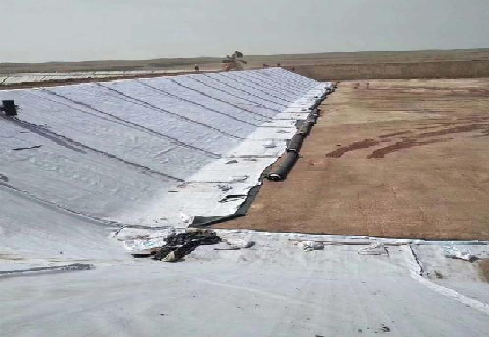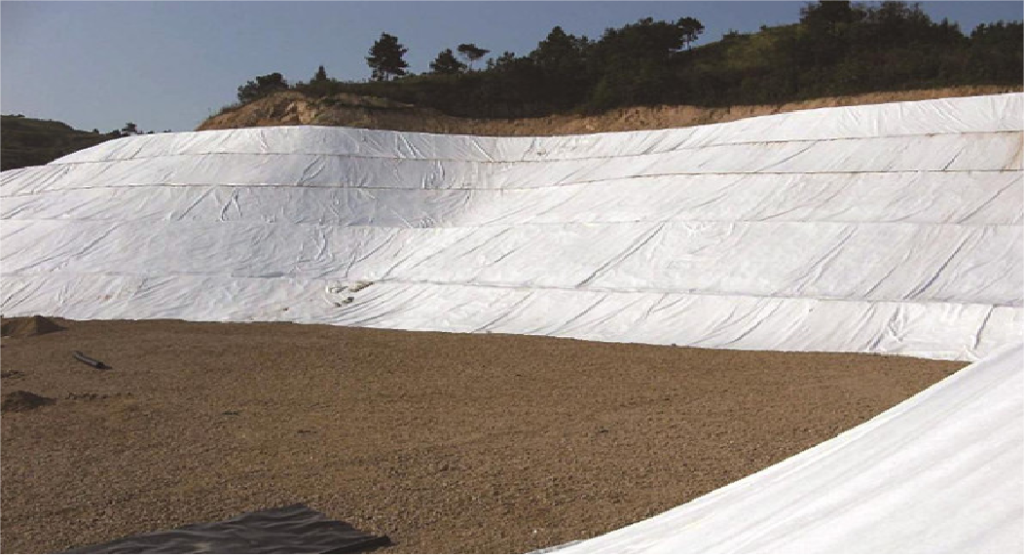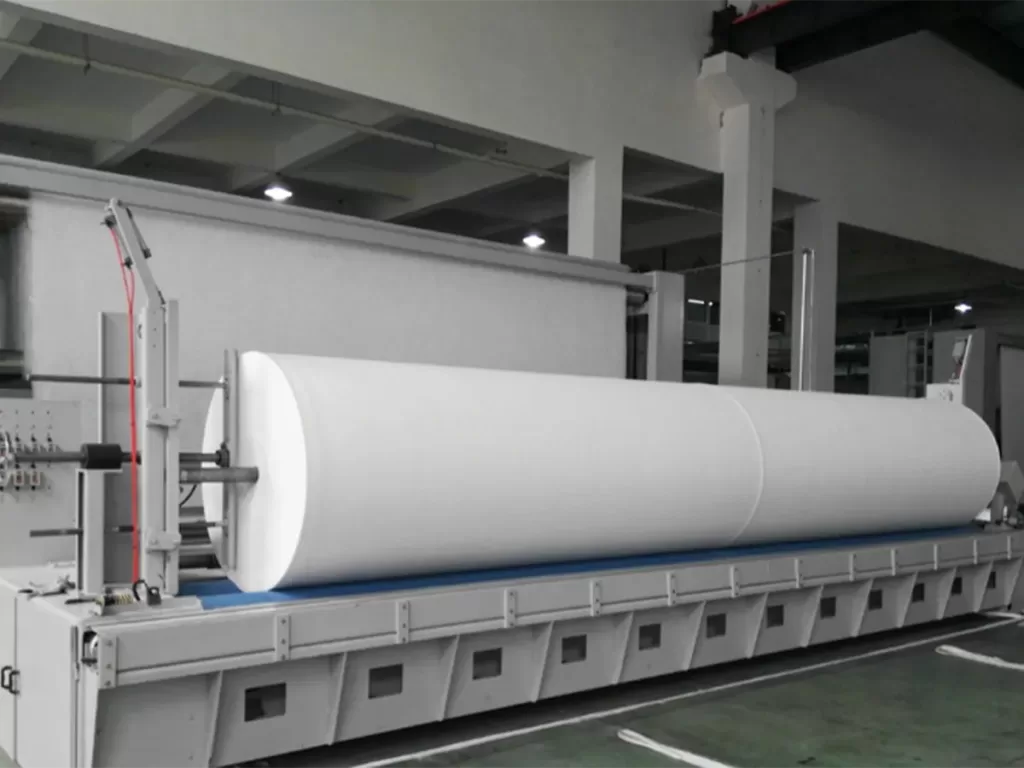+86-159 9860 6917
info@geofantex.com
geofantex@gmail.com
+86-400-8266163-44899
Geotextile fabric is an essential material in modern construction, particularly when it comes to building and maintaining retaining walls. This fabric, often referred to as “fabric on the wall,” provides crucial support and protection, ensuring the longevity and stability of retaining structures. In this article, we’ll explore the types of fabrics used behind retaining walls, their applications, and the benefits they offer.
Which Geotextile Fabric Is Best for Retaining Wall Drainage and Soil Stabilization?
- Filtration: Allows water to pass through while preventing fine soil particles from entering the drainage layer, reducing hydrostatic pressure behind the wall.
- Separation: Keeps backfill soil from mixing with gravel or other drainage aggregates, preserving structural integrity.
- Drainage: Promotes proper water flow behind the wall, preventing water accumulation that could compromise stability.
- Erosion Control: Protects the soil from erosion caused by water flow, enhancing the long-term durability of the retaining wall.

How do you use geotextile fabric in a retaining wall?
Using geotextile fabric in a retaining wall involves several steps to ensure it functions effectively in providing drainage and soil stabilization. Here’s a step-by-step guide on how to use geotextile fabric in a retaining wall:
- Excavate the Area: Begin by excavating the area where the retaining wall will be built. Make sure to dig a trench for the base of the wall and enough space behind the wall for drainage material.
- Prepare the Base: Lay a layer of gravel or crushed stone at the base of the wall to provide a stable foundation and good drainage. Compact this layer to ensure it’s firm and level.
- Install the First Layer of Blocks or Stones: Start building the retaining wall by placing the first row of blocks or stones on the prepared base. Ensure this row is level and properly aligned, as it forms the foundation for the entire wall.
- Lay the Geotextile Fabric: Unroll the geotextile fabric and place it directly behind the first layer of the retaining wall. The fabric should extend from the base of the wall up to the top, and it should be wide enough to overlap with the next section of fabric when more layers are added.
- Backfill with Gravel or Drainage Aggregate: After laying the geotextile fabric, start backfilling behind the wall with gravel or another drainage aggregate. The fabric will prevent soil from mixing with the gravel while allowing water to flow through.
- Fold the Geotextile Over the Gravel: Once you’ve added a layer of gravel, fold the geotextile fabric over the top of the gravel. This will create a separation layer between the gravel and the soil backfill that will be added later.
By following these steps, the geotextile fabric will help manage water drainage, prevent soil erosion, and extend the life of your retaining wall.
What is best to put behind a retaining wall?
Geotextile fabric serves several essential functions in the construction and longevity of retaining walls, making it a critical component for ensuring stability and durability. The key uses include:
- Filtration: Geotextile allows water to pass through while preventing fine soil particles from washing out of the backfill. This filtration reduces hydrostatic pressure buildup behind the wall, which is a major cause of wall failure.
- Separation: By acting as a barrier between different soil layers and drainage materials (like gravel), geotextiles prevent mixing. This separation preserves the structural integrity and load-bearing capacity of the backfill.
- Drainage: The fabric helps channel water away from the backfill area, facilitating proper drainage. Efficient drainage lowers water retention behind the wall, reducing pressure that could destabilize the structure.
- Erosion Control: Geotextiles protect the backfill soil and adjacent ground from erosion caused by water flow, maintaining the wall’s long-term stability.
When combined with properly graded gravel and effective drainage systems (such as perforated pipes), non-woven geotextile fabric significantly improves the performance of retaining walls. It enhances soil stability, minimizes maintenance, and extends the wall’s lifespan by managing water flow and preventing soil displacement.

Geotextile Fabric Behind Retaining Walls: Benefits, Selection & Installation
Geotextile fabric, commonly known as “fabric on the wall,” is crucial for constructing stable and durable retaining walls, offering soil stabilization, drainage, filtration, and erosion control. Key points include:
- Recommended Fabric: Non-woven geotextile is ideal for retaining walls due to its permeability, strength, and ability to manage water flow.
- Filtration: Allows water to pass while preventing fine soil particles from entering the drainage layer, reducing hydrostatic pressure behind the wall.
- Separation: Prevents mixing of backfill soil with gravel or drainage aggregates, maintaining structural integrity.
- Drainage: Facilitates water flow behind the wall, reducing pressure buildup and preventing soil saturation.
- Erosion Control: Protects soil and backfill from erosion, ensuring long-term stability of the wall.
- Installation Tips: Excavate the area, prepare a gravel base, install the first layer of blocks or stones, lay the geotextile fabric behind the wall, backfill with gravel, and fold the fabric over the aggregate for proper separation. Overlap sections and combine with drainage systems for optimal performance.
Using geotextile fabric behind retaining walls enhances water management, stabilizes soil, minimizes maintenance, and significantly prolongs wall lifespan, making it an indispensable material in modern construction projects.
Geotextile fabric, often referred to as “fabric on the wall,” plays a vital role in the construction and maintenance of retaining walls. It provides essential support by enhancing drainage, preventing soil erosion, and reducing pressure on the wall. By using the appropriate type of geotextile fabric and combining it with gravel and backfill soil, you can ensure the longevity and stability of retaining walls. Understanding the benefits and proper application of geotextile fabric can lead to more effective and durable retaining wall structures in various construction projects.



Get Free Sample
We’ll respond as soon as possible(within 12 hours)





















